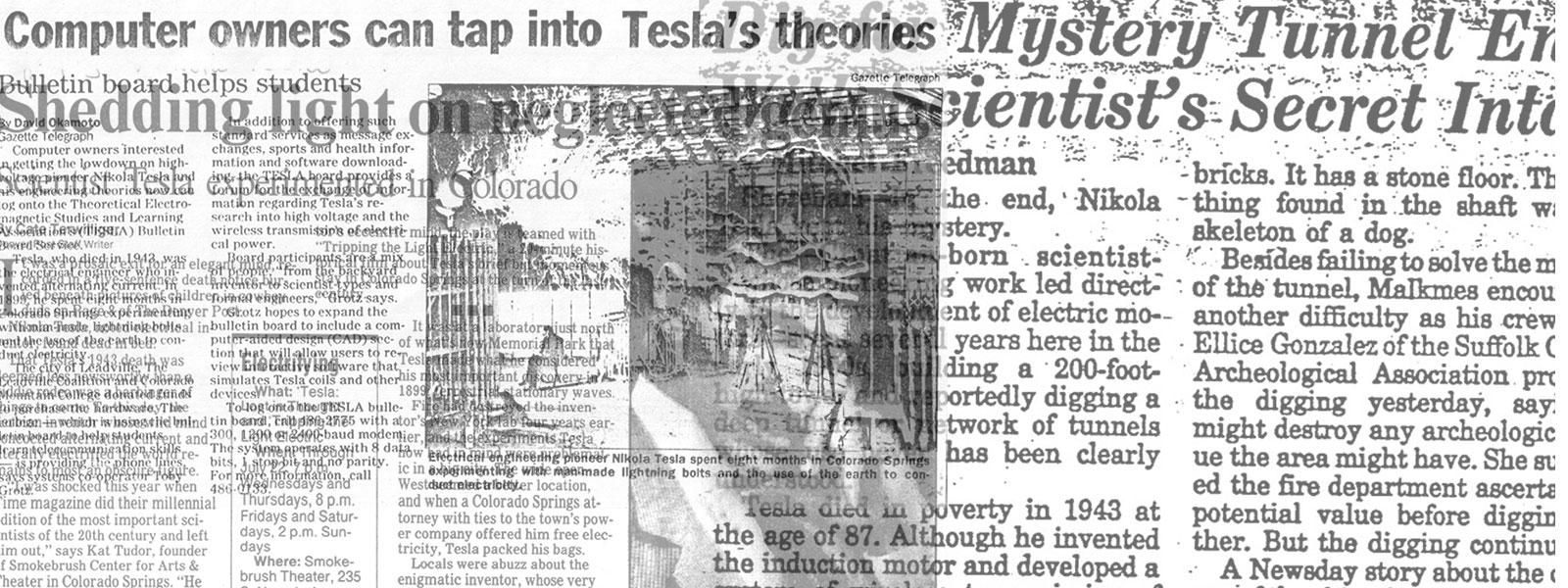
Nikola Tesla Articles
The Tesla Method of Obtaining Direct from Alternating Currents
The accompanying diagrams illustrate a novel method of obtaining direct from alternating currents. This method which has recently been patented by Nikola Tesla of New York, consists, broadly speaking, in developing, in say, two branches of a circuit from an alternating generator what might be termed “active resistances” of opposite electrical character, so that the current, or current waves, of opposite sign will be diverted through different circuits, those of one sign passing over one branch, and those of the other sign over another. While a number of “active resistances” may be used in the system, which have been classed by the inventor under the heads of “purely electrical,” “electro-magnetic,” and “magnetic,” in this explanation only two plans are described, these being sufficient to illustrate the general principle of the invention. It is assumed, also, in the description that the circuit is divided into but two branches, as any further subdivision involves merely an extension of the general principle.
Fig. 1 represents the simplest application of the method. In this diagram is represented an alternating dynamo feeding a circuit divided into two branches as shown. In one of these branches is inserted a device to create an electromotive force counter to the waves or impulses of current of one sign and in the other branch a similar device is inserted which opposes the waves of the opposite sign. These devices may be assumed to be batteries, primary or secondary, or continuous current dynamos. The action in the system may be explained as follows:
The waves or impulses of opposite direction composing the main current have a natural tendency to divide between the two branches. By reason, however, of the opposite electrical character or effect of the two branches, one will offer an easy passage to a current of a certain direction, while the other will offer a relatively high resistance to the passage of the same current. The result of this disposition is, that the waves of current, of one sign will, partly or wholly, pass over one of the paths or branches, while those of the opposite sign pass over the other. There may thus be obtained from an alternating current, two or more direct currents without the employment of any commutator such as has been heretofore regarded as necessary to use. The current in either branch may, therefore, be applied in the same way and for the same purposes as any other direct current.
Fig. 2 illustrates an “electro-magnetic” device for accomplishing a similar result - that is to say, instead of producing directly by a generator an electromotive force in each branch of the circuit, fields of force are established and the branches lead through the same in such manner that an active opposition of opposite effect or direction will be developed therein by the passage, or tendency to pass, of the alternations of current. In Fig. 2, for example, is represented the generator of alternating currents, line-circuit, and the branches over which the alternating currents are directed. In each branch is included the secondary of a transformer or induction coil. The primaries of the induction coils or transformers are connected either in parallel or in series with a source of direct or continuous currents indicated at the left in the diagram, and the number of convolutions is so calculated for the strength of the current that the cores will be saturated. The connections are such that the conditions in the two transformers are of opposite character - that is to say, the arrangement is such that a current wave or impulse corresponding in direction with that of the direct current in one primary is of opposite direction to that in the other primary; hence it results that while one secondary offers a resistance or opposition to the passage through it of a wave of one sign, the other secondary similarly opposes a wave of opposite sign. In consequence the waves of one sign will, to a greater or less extent, pass by way of one branch, while those of opposite sign in like manner pass over the other branch.
In addition to those described the inventor makes use of various arrangements of a similar character. The above description covers, however, the main points of the invention.


